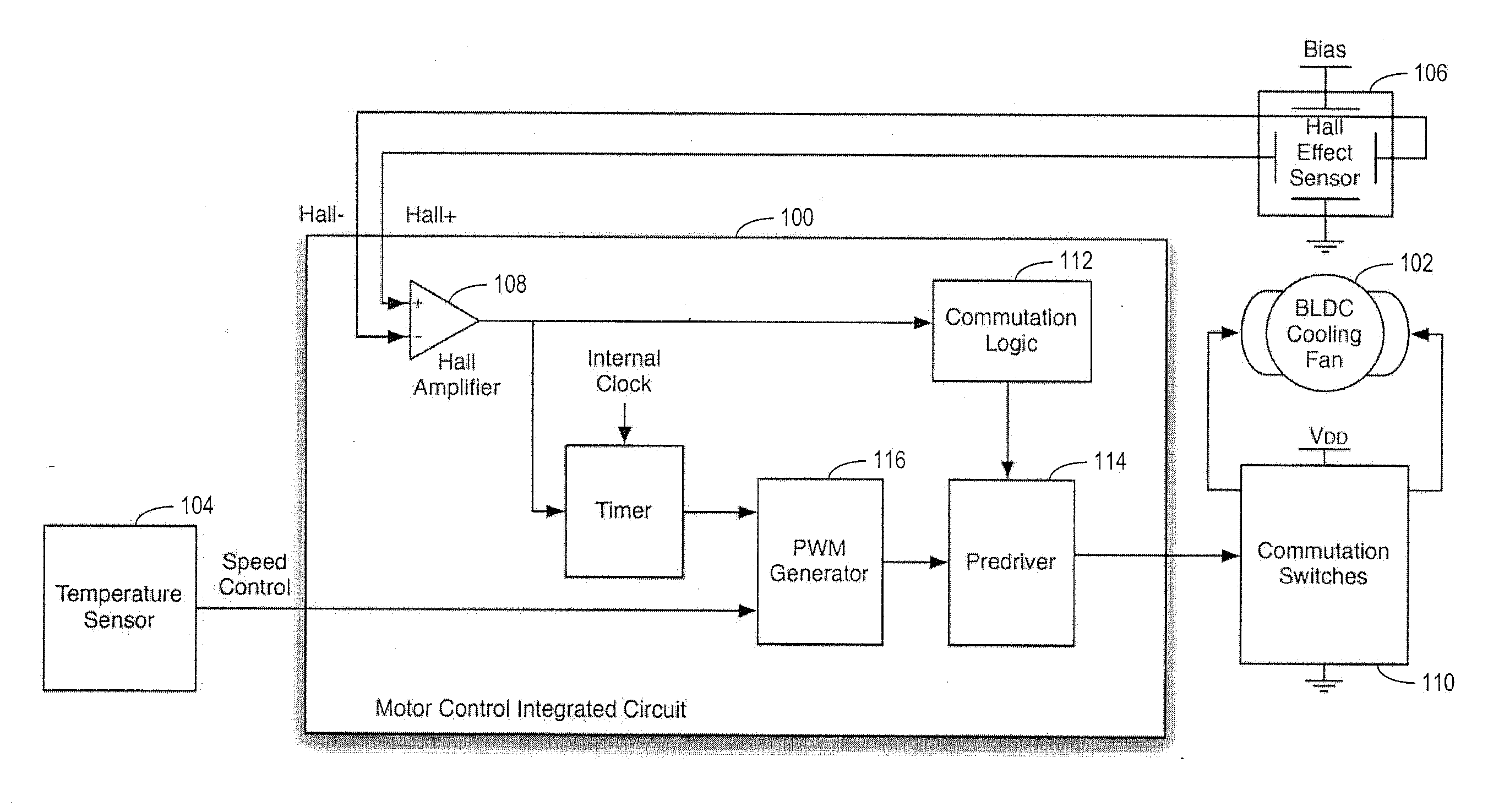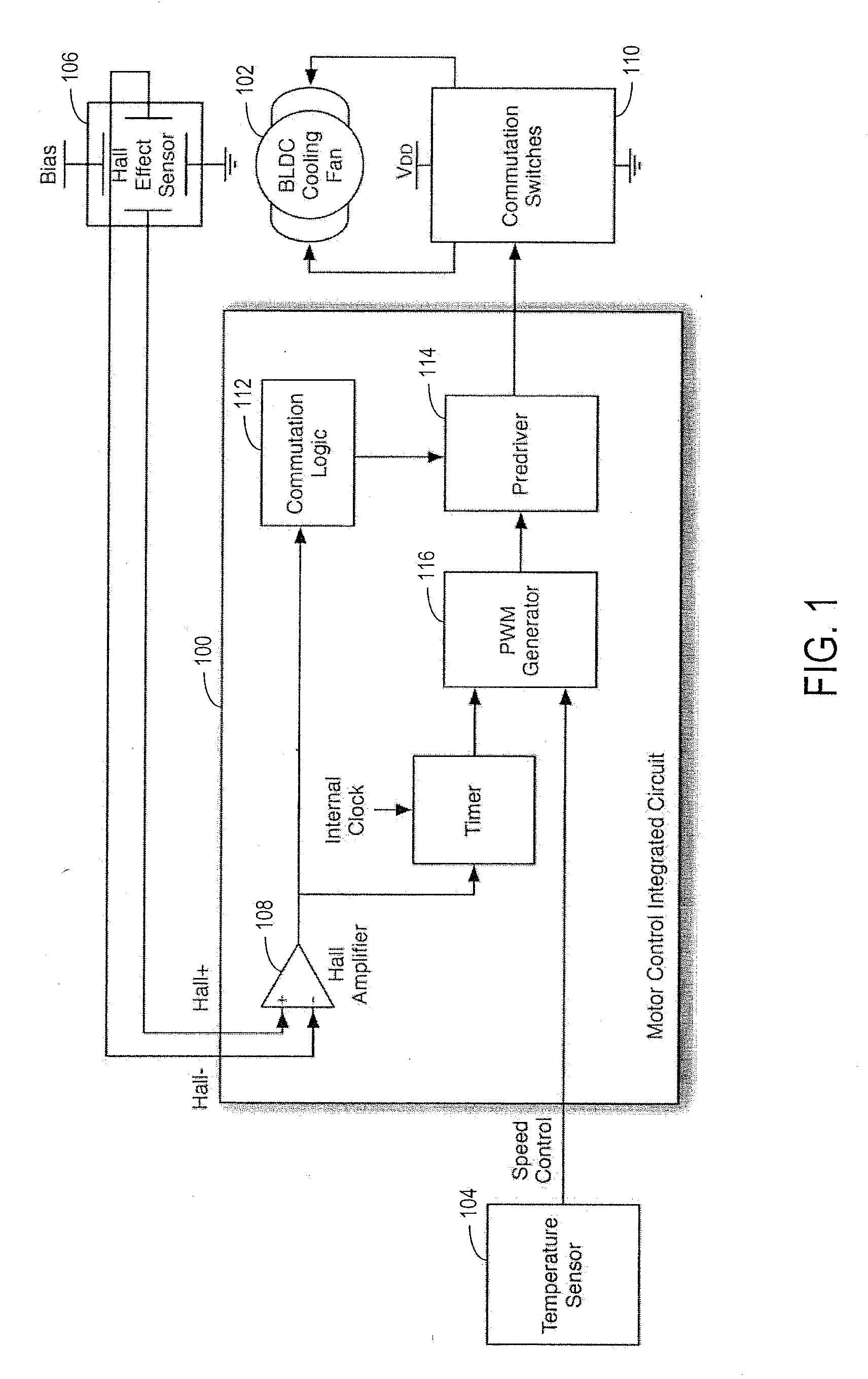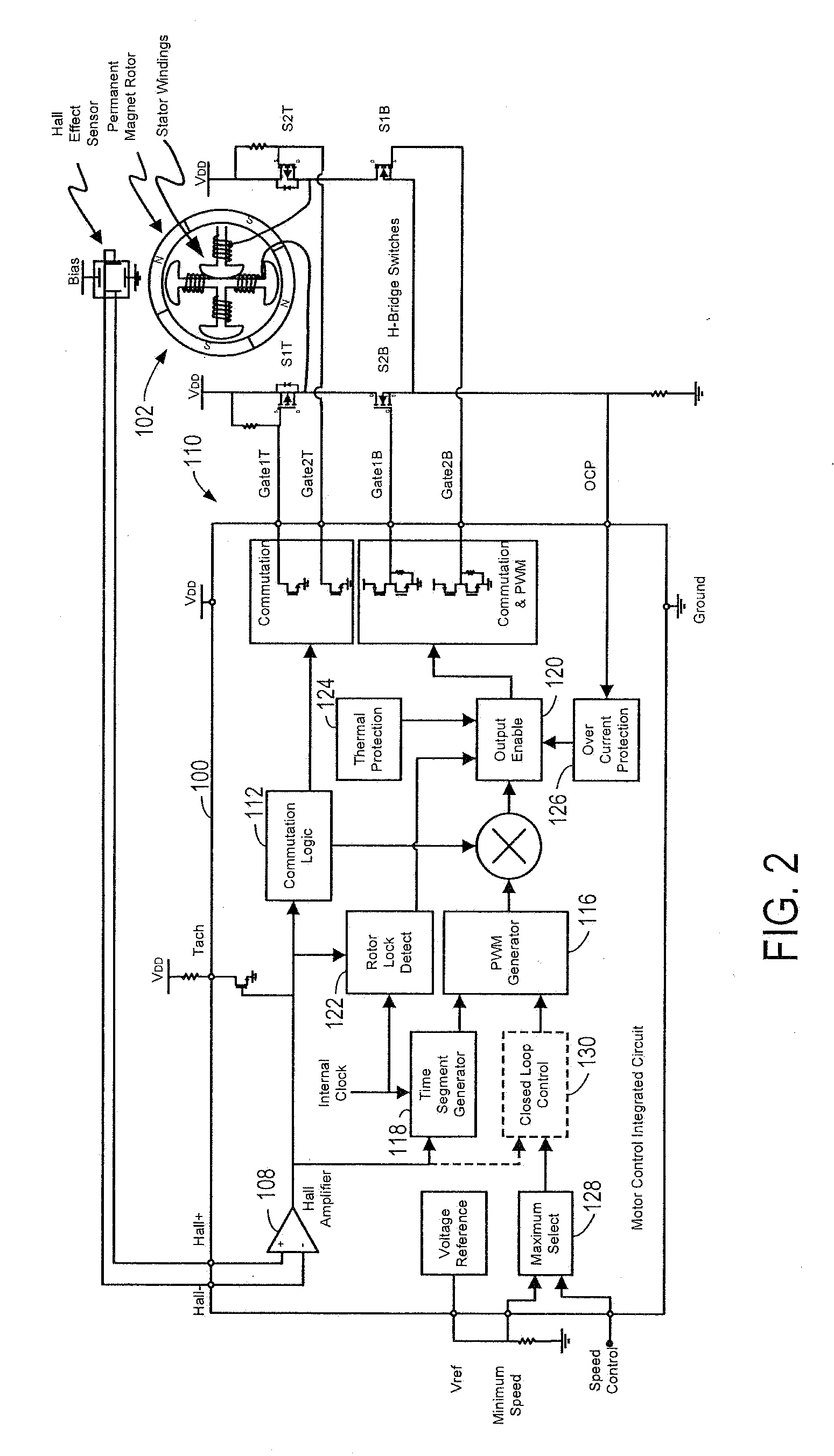Position Corrected Pulse Width Modulation for Brushless Direct Current Motors
a direct current motor and pulse width technology, applied in the direction of motor/generator/converter stopper, electronic commutator, dynamo-electric converter control, etc., can solve the problem of not being able to recognize physical differences in the motor, unable to achieve uniform torque output of the motor, and unable to achieve the effect of reducing motor audible noise, improving motor efficiency, and improving motor efficiency
- Summary
- Abstract
- Description
- Claims
- Application Information
AI Technical Summary
Benefits of technology
Problems solved by technology
Method used
Image
Examples
Embodiment Construction
[0021]FIG. 1 shows a block diagram of a typical application for a motor control integrated circuit 100. In this example the brushless direct current (BLDC) motor 102 is a cooling fan, although it could be any BLDC motor. In the cooling fan application a temperature sensor 104 reports the system temperature to motor control integrated circuit (IC) 104 in the form of a speed control signal representing the desired speed for the fan. The differential output of a Hall Effect Sensor 106 gets amplified by a Hall Amplifier 108 to determine how the rotor's magnetic poles, north and south, are oriented with respect to the stator. Commutation Switches 110 connect the fan's motor windings to the power supply (labeled VDD) and ground. The motor control IC 100 uses the magnetic pole information together with Commutation Logic block 112, Pre-Driver 114, and Commutation Switches 110 to commutate the current in the stator windings. A pulse width module (PWM) Generator 116 adjusts the PWM duty cycle...
PUM
 Login to View More
Login to View More Abstract
Description
Claims
Application Information
 Login to View More
Login to View More - R&D
- Intellectual Property
- Life Sciences
- Materials
- Tech Scout
- Unparalleled Data Quality
- Higher Quality Content
- 60% Fewer Hallucinations
Browse by: Latest US Patents, China's latest patents, Technical Efficacy Thesaurus, Application Domain, Technology Topic, Popular Technical Reports.
© 2025 PatSnap. All rights reserved.Legal|Privacy policy|Modern Slavery Act Transparency Statement|Sitemap|About US| Contact US: help@patsnap.com



